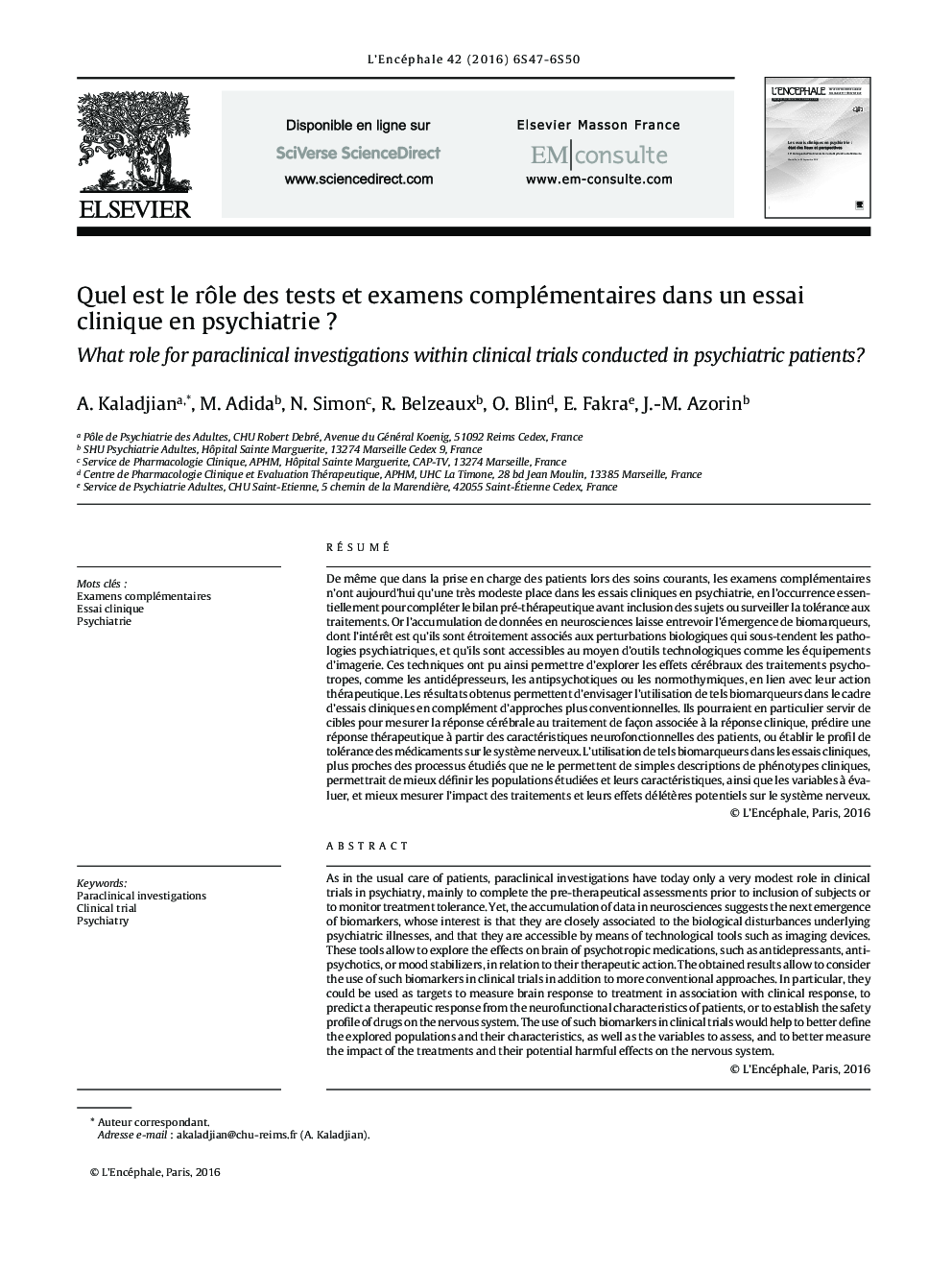| Article ID | Journal | Published Year | Pages | File Type |
|---|---|---|---|---|
| 5721331 | L'Encéphale | 2016 | 4 Pages |
Abstract
As in the usual care of patients, paraclinical investigations have today only a very modest role in clinical trials in psychiatry, mainly to complete the pre-therapeutical assessments prior to inclusion of subjects or to monitor treatment tolerance. Yet, the accumulation of data in neurosciences suggests the next emergence of biomarkers, whose interest is that they are closely associated to the biological disturbances underlying psychiatric illnesses, and that they are accessible by means of technological tools such as imaging devices. These tools allow to explore the effects on brain of psychotropic medications, such as antidepressants, antipsychotics, or mood stabilizers, in relation to their therapeutic action. The obtained results allow to consider the use of such biomarkers in clinical trials in addition to more conventional approaches. In particular, they could be used as targets to measure brain response to treatment in association with clinical response, to predict a therapeutic response from the neurofunctional characteristics of patients, or to establish the safety profile of drugs on the nervous system. The use of such biomarkers in clinical trials would help to better define the explored populations and their characteristics, as well as the variables to assess, and to better measure the impact of the treatments and their potential harmful effects on the nervous system.
Related Topics
Health Sciences
Medicine and Dentistry
Psychiatry and Mental Health
Authors
A. Kaladjian, M. Adida, N. Simon, R. Belzeaux, O. Blin, E. Fakra, J.-M. Azorin,
